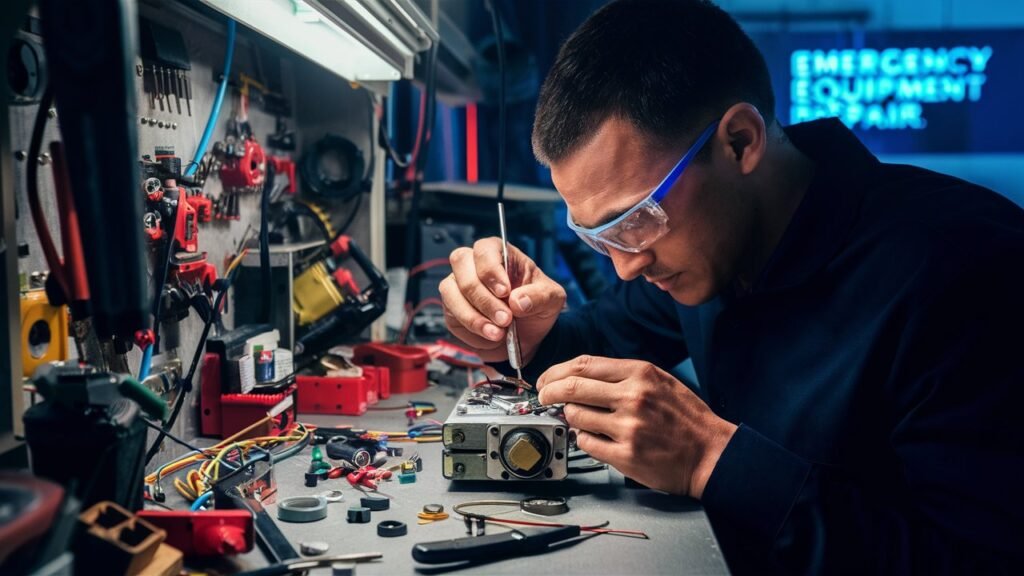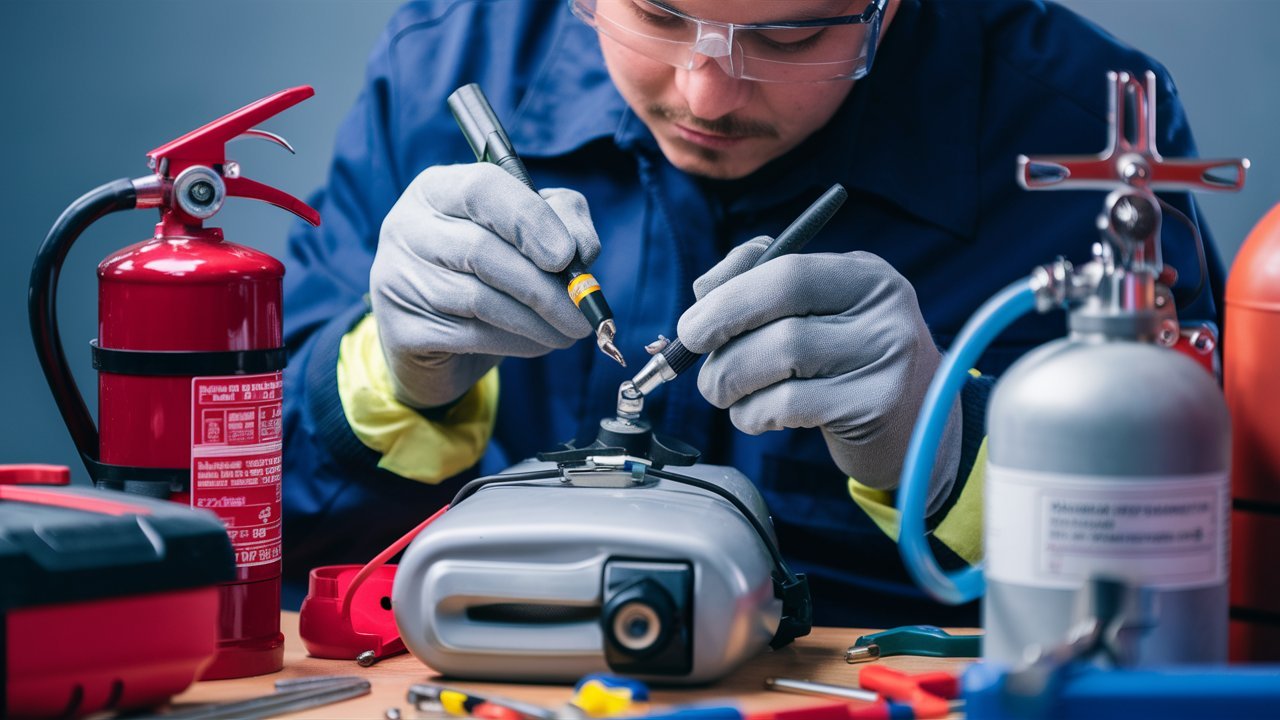Emergencies can strike at any moment, and having properly functioning emergency equipment is crucial for safeguarding lives and property. From fire extinguishers to emergency lighting systems, these devices play a vital role in mitigating risks and ensuring swift responses during critical situations. However, like any machinery, emergency equipment may encounter malfunctions or deterioration over time, underscoring the importance of timely repairs and maintenance. In this comprehensive guide, we delve into the world of emergency equipment repair, offering insights and best practices to uphold safety standards and operational efficiency.

Understanding the Significance of Emergency Equipment Repair
Ensuring that emergency equipment is in optimal working condition is paramount for several reasons. Firstly, Mitigating Risks of Failure: Emergency equipment failures can have catastrophic consequences, leading to injuries, property damage, and even loss of life. By promptly addressing repair needs, potential risks are mitigated, and safety is enhanced. Secondly, Compliance with Regulations: Regulatory agencies mandate regular inspections and maintenance of emergency equipment to adhere to safety standards and regulations. Failure to comply can result in fines, penalties, and legal liabilities. Therefore, proactive repair and maintenance are essential for regulatory compliance.
The Importance of Prompt Repairs
When emergency equipment malfunctions, every second counts. Prompt repairs can mean the difference between containing a fire or allowing it to escalate, or between safely evacuating a building and facing hazardous conditions. Timely repairs ensure that emergency equipment is ready to perform its intended function when needed most, bolstering preparedness and response capabilities. Delaying repairs can compromise safety and escalate risks, underscoring the urgency of addressing issues promptly.
Common Emergency Equipment Repair Issues
Emergency equipment can experience a range of issues that necessitate repairs. Battery Degradation: Batteries powering emergency lighting systems and exit signs degrade over time, leading to diminished performance. Sensor Malfunctions: Smoke detectors and fire alarms may malfunction due to sensor issues or wiring faults, requiring immediate attention. Pressure Loss: Fire extinguishers can lose pressure, rendering them ineffective in combating fires. Identifying and rectifying these issues promptly is essential to maintain the reliability of emergency equipment.

Steps to Effective Emergency Equipment Repair
1. Inspection and Diagnosis
Before initiating repairs, a thorough inspection and diagnosis are essential to identify the root cause of the problem accurately. This may involve testing components, conducting visual inspections, and utilizing diagnostic tools to pinpoint issues.
2. Procurement of Replacement Parts
Once the problem has been diagnosed, obtaining the necessary replacement parts is crucial for completing the repair process efficiently. It is essential to ensure that replacement parts are compatible with the specific make and model of the equipment.
3. Repair and Calibration
During the repair process, skilled technicians will perform the necessary repairs, adjustments, and calibrations to restore the equipment to proper working condition. This may involve replacing damaged components, recalibrating sensors, or recharging batteries.
4. Testing and Validation
After completing the repairs, rigorous testing and validation procedures are conducted to verify that the equipment functions as intended. This may involve simulating emergency scenarios or conducting performance tests to ensure reliability.
FAQs (Frequently Asked Questions)
Q: How often should emergency equipment be inspected? A: Emergency equipment should be inspected regularly, with frequency varying depending on the type of equipment and regulatory requirements. Typically, inspections are conducted quarterly or annually.
Q: Can I repair emergency equipment myself? A: It is not advisable to attempt repairs on emergency equipment unless you have the necessary training and expertise. Improper repairs can compromise safety and may result in further damage.
Q: What should I do if I notice a malfunction in emergency equipment? A: If you encounter any issues with emergency equipment, report them immediately to designated personnel or facilities management. Avoid attempting repairs yourself to prevent safety risks.
Q: Is emergency equipment repair covered by insurance? A: Depending on your insurance policy and coverage, emergency equipment repair may be eligible for reimbursement. It is recommended to consult with your insurance provider for clarification.
Q: How can I prolong the lifespan of emergency equipment? A: Regular maintenance, timely repairs, and adherence to manufacturer guidelines are key to prolonging the lifespan of emergency equipment. Additionally, conducting routine inspections and testing can identify issues early, preventing costly repairs.
Q: Are there regulations governing emergency equipment repair? A: Yes, regulatory agencies such as OSHA (Occupational Safety and Health Administration) and NFPA (National Fire Protection Association) establish standards and regulations for the inspection, maintenance, and repair of emergency equipment.
Conclusion
Emergency equipment repair is a critical aspect of maintaining safety and preparedness in various settings, including commercial buildings, industrial facilities, and residential properties. By prioritizing timely repairs, conducting regular inspections, and adhering to safety regulations, organizations and individuals can ensure that emergency equipment remains reliable and effective when needed most.

